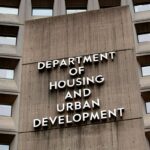This piece originally appeared in the April 2024 edition of MortgagePoint magazine, online now.
When a property is unoccupied, many municipalities require that the owners register the address. Known as Vacant Property Registration (VPR), these lists are a way for local governments to keep track of potentially problematic properties.
The VPR process arose in response to the rise in deteriorating vacant buildings following the foreclosure crisis in 2008. Local governments began enacting VPR ordinances to discourage vacancies, identify the owners of vacant properties and ensure those owners maintain them to community standards. The VPR list identifies and accounts for unoccupied properties throughout a municipality and ensures owners actively maintain, preserve, and manage the property to ensure it does not become a blight to the community.
Property owners, as well as mortgage servicers, have a never-ending list of responsibilities and the VPR process is one aspect of property preservation that may seem insignificant at first glance.
Tracking enacted registration ordinances by municipality, understanding the related registration (and deregistration) requirements, and completing the actual property registration process can be a time-consuming and potentially expensive undertaking.
In addition, overburdened local municipalities may not have the time or proper staffing to constantly monitor VPRs and remind owners they must stay in compliance.
But just because a local VPR list is not being constantly checked does not mean owners are exempt from penalties once the administrative board verifies which owners are—and which are not—in full VPR compliance.
In fact, it is the complete opposite. VPRs can cause major challenges, with small fines compounding into major penalties for those not in compliance, as well as liens that could prevent a servicer from selling a property. Some local governments can even impose fees that increase over time or may require owners or servicers to have a plan for the property before it can be de-registered.
Depending on where the property is located, registration may be required after a certain period of time or after a foreclosure. Some municipalities charge heavy fees by the day that can quickly become a significant liability. The other risk to consider is the registration requirements change frequently, necessitating constant monitoring to ensure compliance.
In fact, the term “vacant property registration” is actually a misnomer, because although many are required due to vacancy there are other situations where registration is required, such as delinquency, foreclosure start or sale, REO, or a combination of these characteristics. In some cases, there might not be a registration fee for the vacancy itself, but the municipality may levee penalties if a property is not maintained according to the standards of local ordinances.
There are also different rules and requirements for different types of property types, such as residential, rentals, or commercial.
Owners must constantly track local ordinances and assess the risk of all properties they own to gauge the potential exposure and prioritize the work to be completed. These constant assessments and evaluations can help determine whether the property needs to be registered. Conversely, some events can trigger a de-registration. For example, a loan may no longer be delinquent, a property may have been sold and no longer the owner’s responsibility, or a property can become occupied.
It’s important owners continually examine municipality ordinances and requirements which frequently change as well as constantly ensure compliance is maintained according to the specific local municipality standards. Some municipalities even require property inspection results to be uploaded on a monthly basis after you’ve registered.
There are ways owners can avoid future VPR issues. Having an appropriate level of staff to manage the overall process as loans move off and on the books continuously can ensure VPRs are property managed internally.
Owners should also build and maintain relationships with local code officers, which can help with compliance and even negotiate the severity of fines if an issue does arise.
An additional solution owners should consider is securing a third-party provider, who takes over the entire VPR process and keeps owners updated on their status. A knowledgeable provider will examine and register properties based on the associated risk level, in addition to reviewing ordinance changes on a regular basis.
By tracking vacant property registration ordinances and ensuring compliance, owners can avoid the nuisance and expense of violations while keeping their properties maintained and up to community standards.








